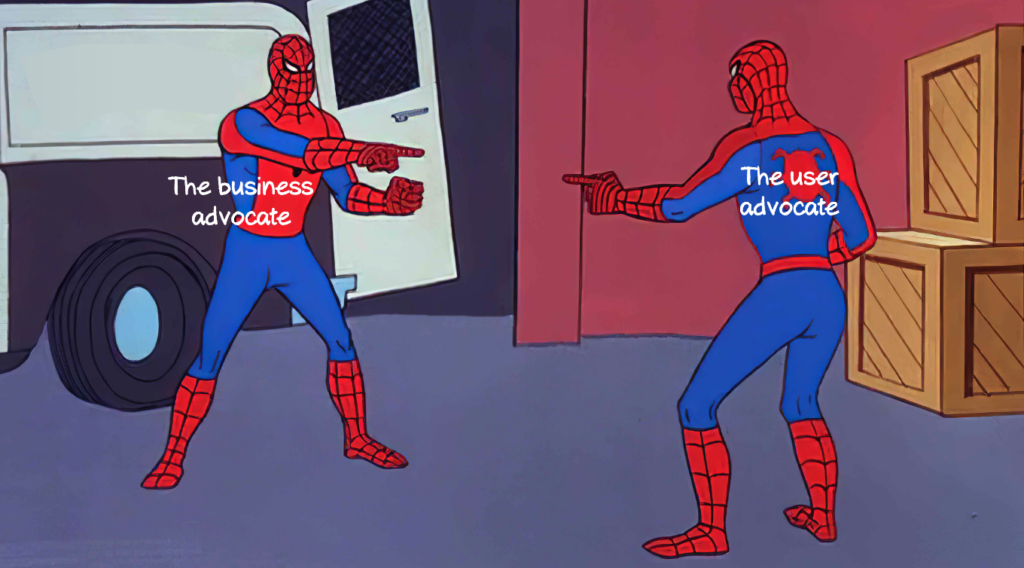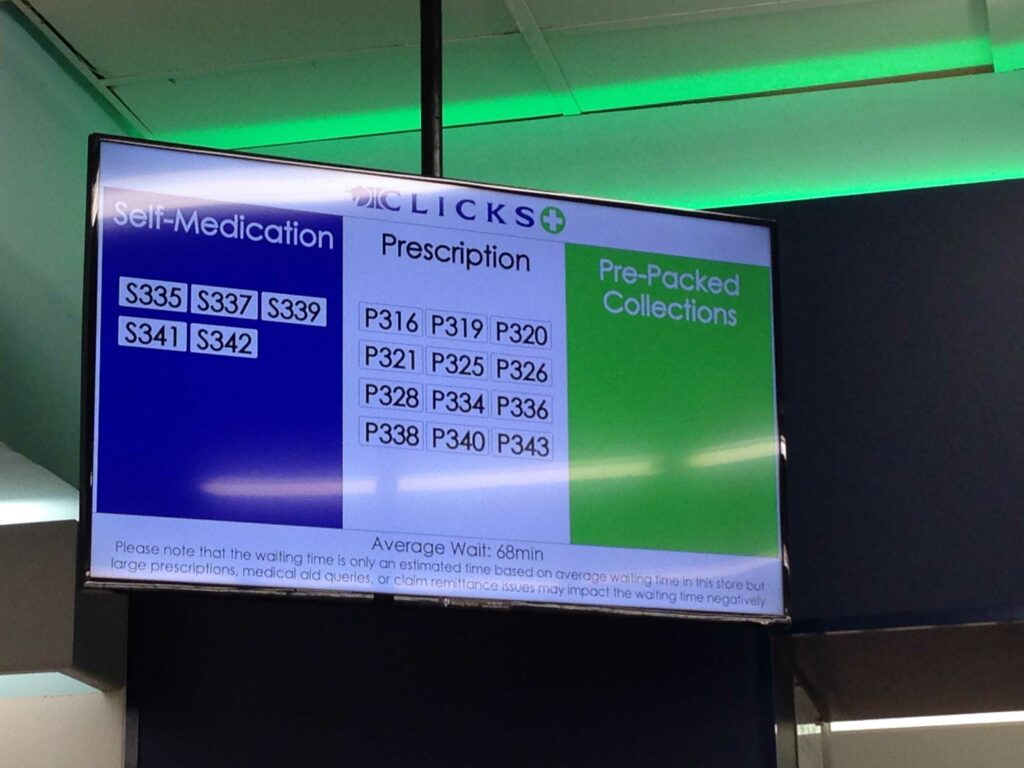It’s probably been drummed into you that your purpose as a UX professional is to be an advocate for the user. I’ll bet this also conveniently plays into your nature. The problem is, it’s not realistic to propose solutions that haven’t carefully considered the strategic and operational impact on the business.
My level of business knowledge was valued as a strength when I worked at an organisation a lifetime ago. I later considered it a weakness because the amount of time I had invested in understanding the business needs outweighed the amount of time I had spent understanding the user needs significantly. I didn’t really feel like a UX designer.
Fast forward to more recent events. I was involved in a research project where the design evolved so rapidly that it changed the cohort we had recruited. We were all set to barrel ahead and get feedback from a user perspective until I soundboarded the situation off a colleague who asked a sobering question.
“Will the feedback still be useful to the business?”
So therein lies the problem. On one side sits the user advocate in you, and on the other sits the business advocate in you and maintaining the balance is tricky.

Let me give you an example of what it looks like when these two are pitted against each other:
I walked into a Clicks pharmacy six years ago to collect prescription medication. The estimated wait time was 68 minutes.

To be clear, I’ve never worked on research for Clicks before and I don’t have any insight into their business. It’s just that 68 minutes was a long time to observe and think about the two perspectives.
The queue is piling up because the pharmacists are so slow. They could be using an inefficient legacy system and that means they can’t physically move any faster.
The user perspective
The business perspective
There aren’t enough seats for patients. Designing for the edge case where the pharmacy is really busy (during flu season for example) isn’t the best use of store space.
The user perspective
The business perspective
Pre-packed collections is a more efficient process but that queue always seems to be empty. Why don’t more people use this system? Once a script is loaded you can only collect from that particular branch so you lose the ability to go to a more convenient one.
The business perspective
The user perspective
Clicks has an sms system so that you don’t have to wait around. Why aren’t these patients moving about to occupy themselves if they know there is an extensive wait time? They may be too sick to want to walk about or feel collectively they put pressure on the pharmacists.
The business perspective
The user perspective
Now don’t get me wrong. The business perspective didn’t matter much to the woman in front of me who was waiting to collect medication for her husband. He was sitting in the car in the blistering heat because getting his wheelchair out of the car for what seemed like a quick errand was too much effort! But I considered the likelihood that only looking at the problem from the patient’s perspective would have resulted in rudimentary solutions that would never be viable for the business.
So how do you manage the balance?
As someone who has spent years swaying too far one way and then the other, I think it begins with reflexivity. Ask the hard questions of yourself before the others in the room.
Are you working to ensure that:
- real-world user problems are present in the room so that the solution serves the user?
- the solution also serves the business objectives?
- the solution is realistic, taking into account the requirements and limitations?
- if it’s not realistic, there is a reasonable way to get there to make the experience better? (Business savviness is of benefit here to facilitate these discussions with stakeholders).
Design the framework that keeps you honest as a UX professional and continue to question your own methods
Moving forward, I believe it’s important that UX professionals focus more strategically on business savviness and fluency. Nurture both the business advocate and the user advocate equally to produce the most sustainable solutions.
(I hope I’ve learned enough from many lessons to do the same).